WP1 – Materials operation conditions and their feasibility studies
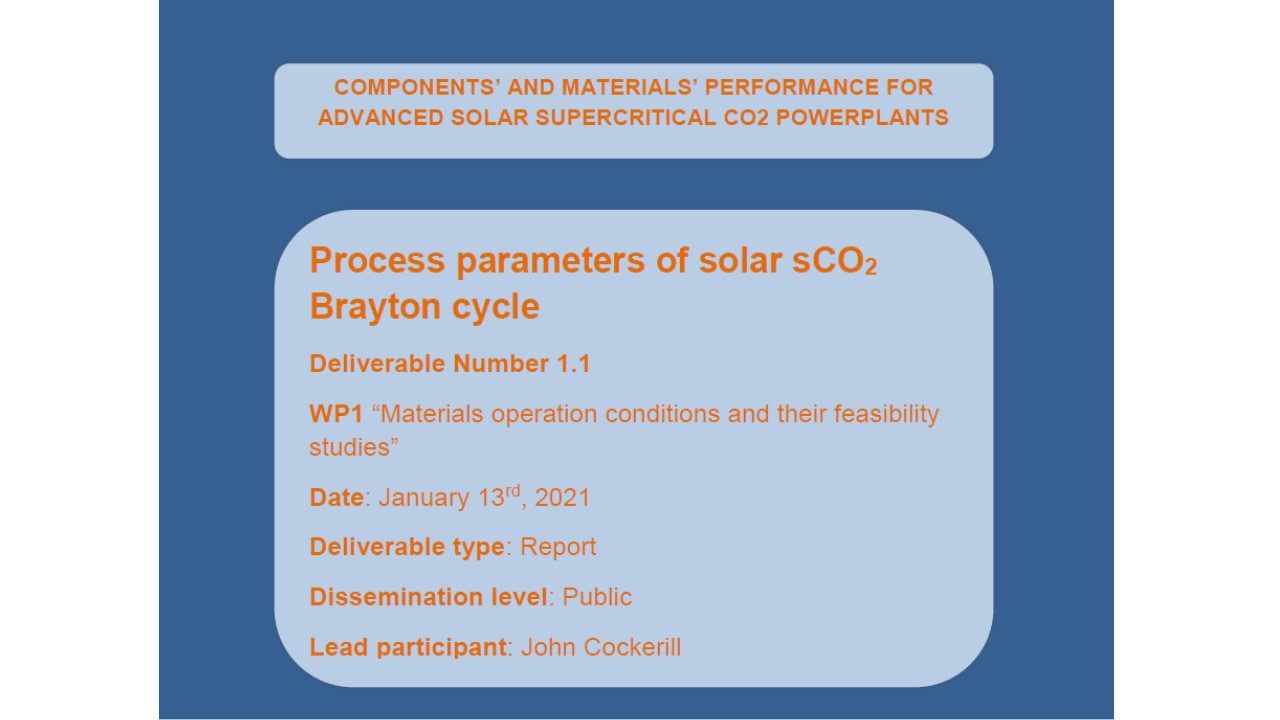
Deliverable 1.1 - Process parameters of solar sCO2 Brayton cycle
The goal of this deliverable is to fix the parameters relevant for the heat exchanger design (mass flow, temperatures and pressures). In order to obtain this data, a Brayton cycle needs to be selected. Because this cycle is not commercially applied yet, there are many options described in the literature. The supercritical CO2 Brayton cycle for COMPASsCO2 should have a very high efficiency, as this is one key requirements of the Work Program of this project1.
January 2021
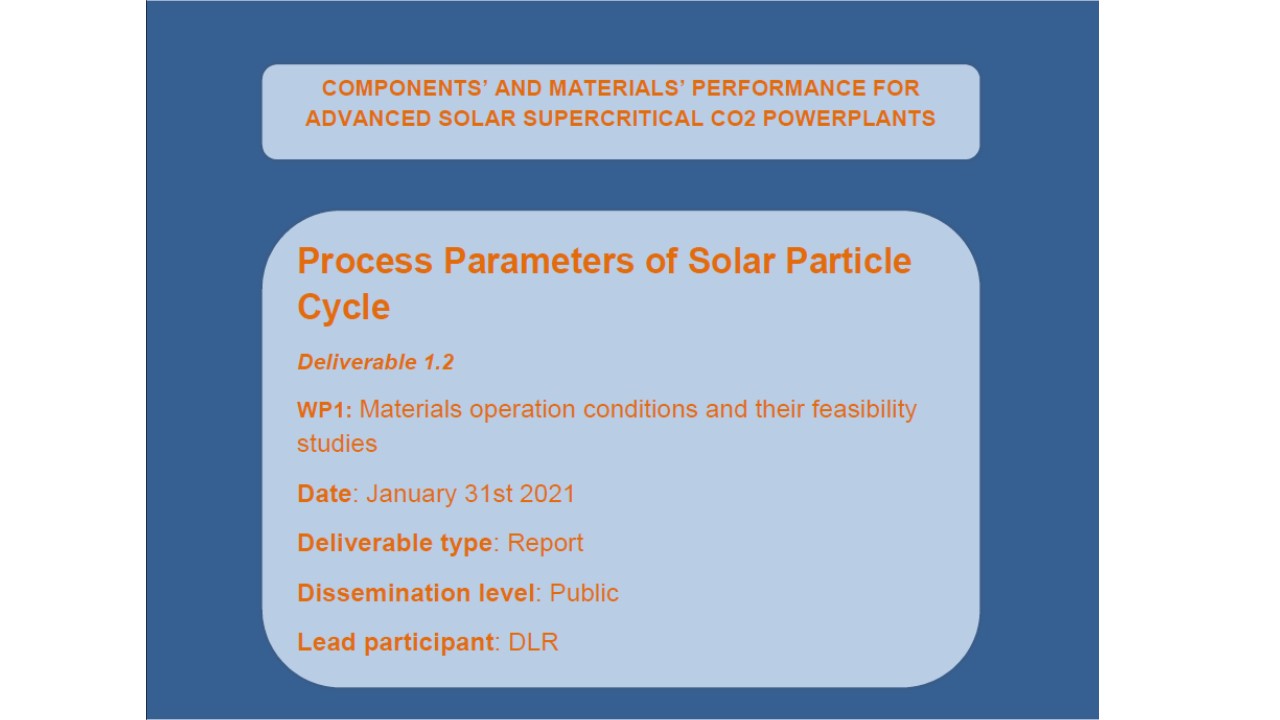
Deliverable 1.2 - Process Parameters of Solar Particle Cycle
The aim of this deliverable is to determine the operating conditions in the particle cycle, defined by the particle- sCO2 heat exchanger (HX), the solar field, the receiver and the thermal energy storage (TES) system. Under the second version, the heat exchanger design has been reviewed, namely sections: 3.2 (process parameters and technical limitations), 3.3 (material selection) and 3.4 (heat exchanger design).
March 2022
WP2 – Development and testing of particles
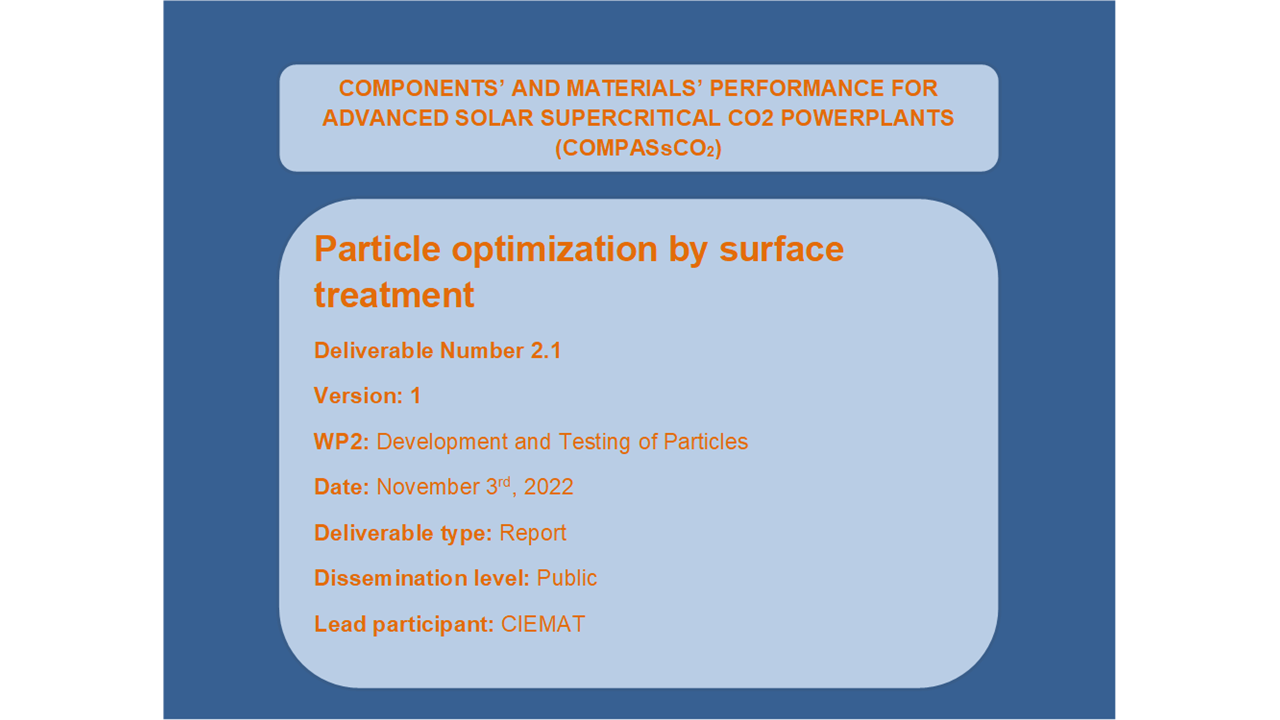
Deliverable 2.1 - Particle optimization by surface treatment
Four different techniques at three institutes were developed and tested on state-of-the-art and novel developed GEN3 particles. The initial optical performance could be improved in all the cases.
October 2022
Deliverable 2.3 - Testing and degradation mechanisms of bulk and optimized particles
April 2024
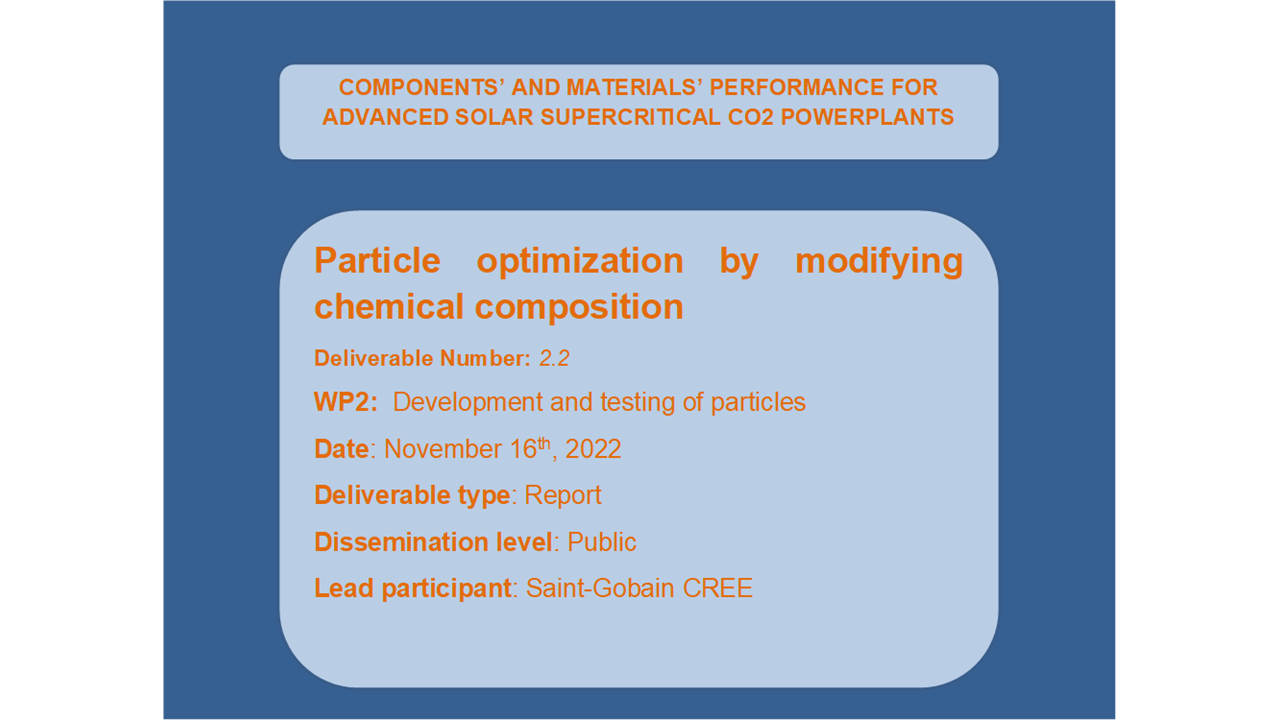
Deliverable 2.2 - Particle optimization by modifying chemical composition
Different generations of fused and granulated particles with improved mechanical properties were developed by Saint-Gobain and proposed to the partners. The granulated particles GEN4 present the best compromise in terms of performance versus cost
October 2022
Deliverable 2.4 - Lifetime prediction of novel particles and improvements beyond the state of the art
October 2024
WP3 – Development of metals
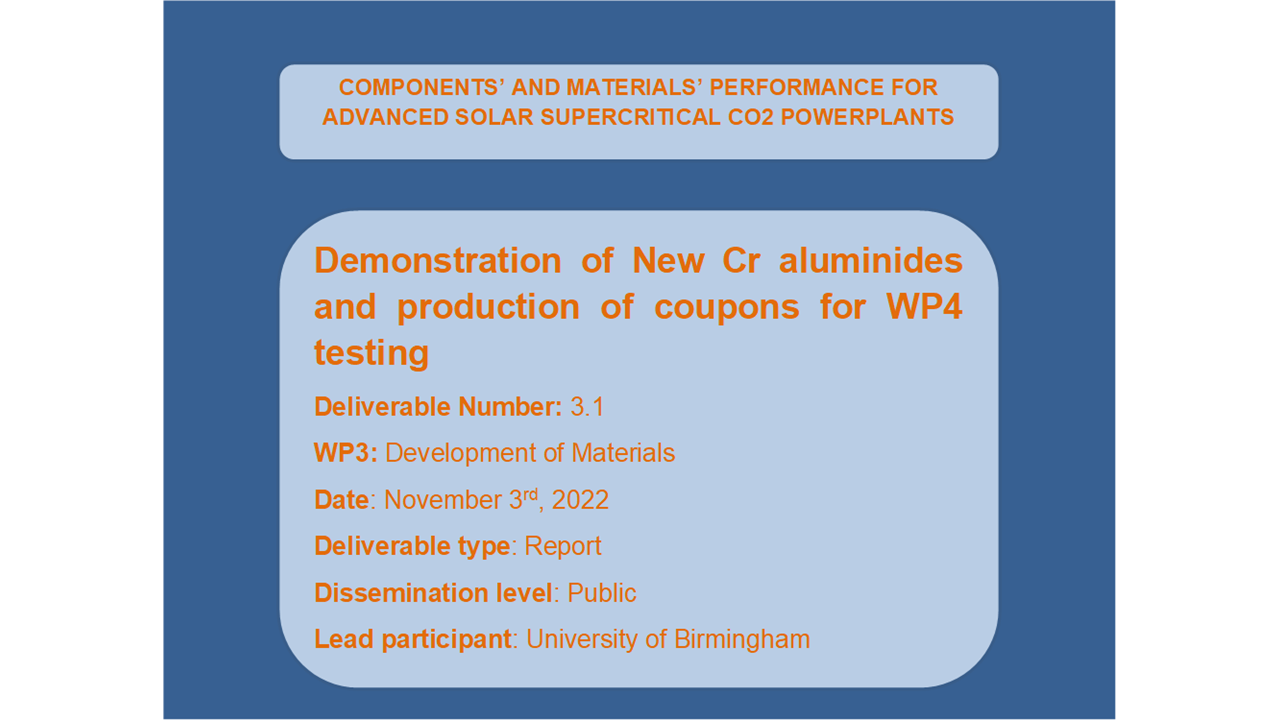
Deliverable 3.1 - Demonstration of New Cr aluminides and production as coupons for WP4 testing
Chromium-based superalloys are a desirable candidate material for the heat exchanger in the next generation of concentrated solar power (CSP). Chromium alloys appear to bear greater thermal stability over alternative high temperature materials such as nickel superalloys, cobalt superalloys and ferritic superalloys. Additionally, iron additions increase the hardness or the alloys and reduce age softening over their ternary alloy equivalent. Preliminary oxidation results show improved oxidation resistance of these alloys
October 2022
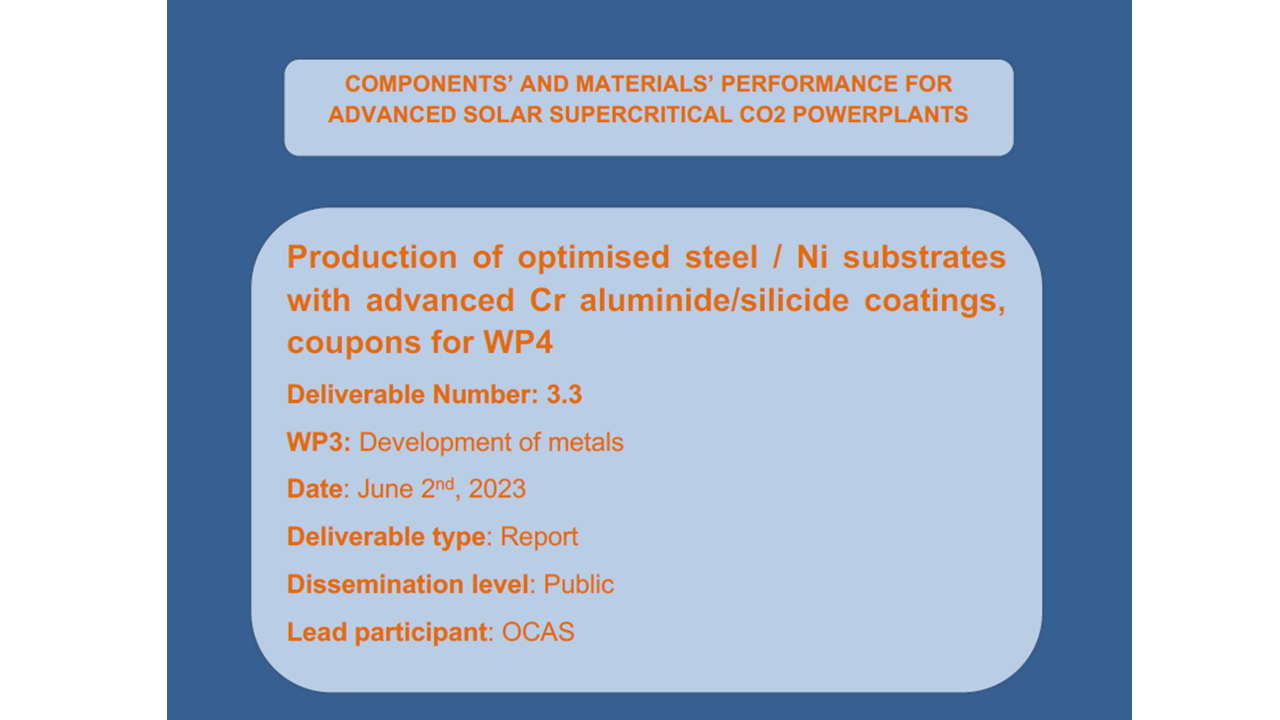
Deliverable 3.3 - Production of optimised steel / Ni substrates with advanced Cr aluminide/silicide coatings, coupons for WP4
For the targeted Cr-Si-based diffusion coatings, pack cementation is the current state-of-the art application process. Within the work of Deliverable 3.3 a new coating process was developed which utilizes a slurry technique to obtain a Cr-Si diffusion coating. This new process has the high potential to be both economically more viable and to meet the technical requirements for wear and oxidation-resistant coating for heat exchanger tubes of a concentrated solar power (CSP) plant with solid particles as heat collecting medium and supercritical CO2 on the power cycle.
April 2023
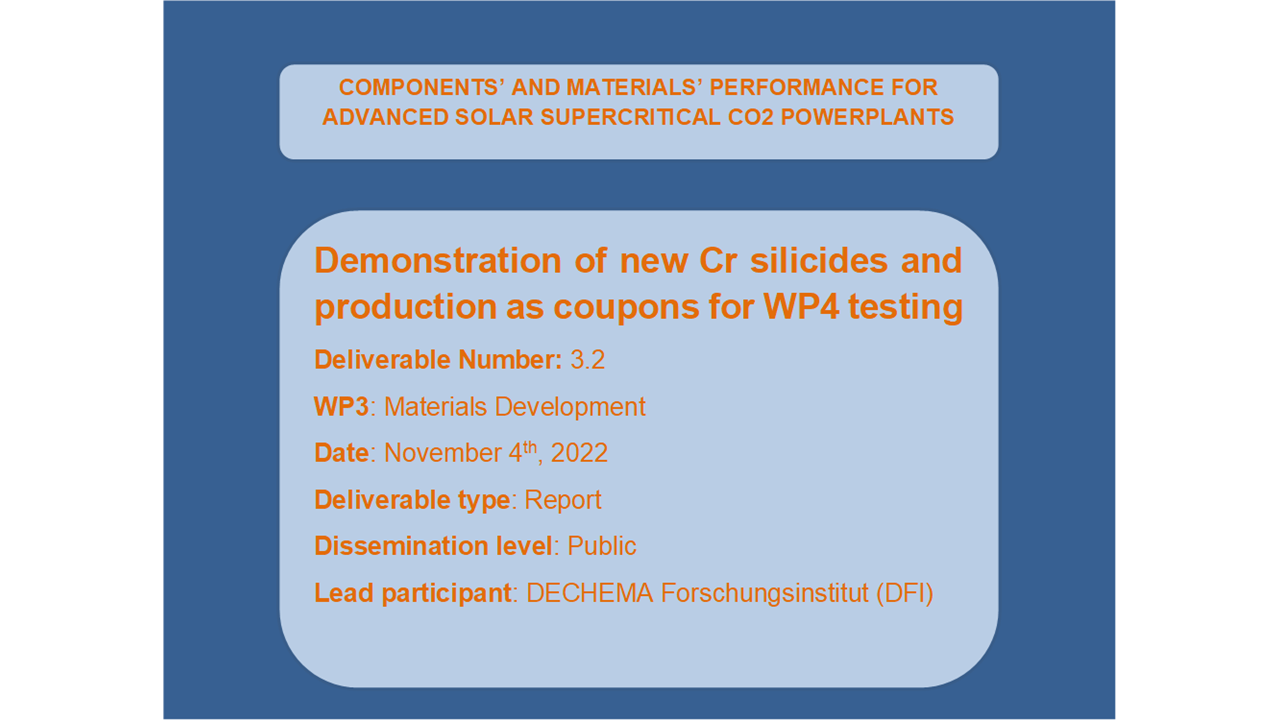
Deliverable 3.2 - Demonstration of New Cr silicides and production as coupons for WP4 testing
Cr-Si-alloys with a two-phase microstructure consisting of a toughening bcc-Crss-matrix and strengthening, hard A15-Cr3Si precipitates are promising materials for use in oxidative high temperature environments. However, Cr-Si alloys have some drawbacks, which are currently excluding them from any structural applications. The focus of the conducted investigations is the microstructure evolution and the influence of Fe and Ni. To investigate the influence of Fe and Ni to the DBTT and mechanical properties, compression tests at different temperatures were carried out.
October 2022
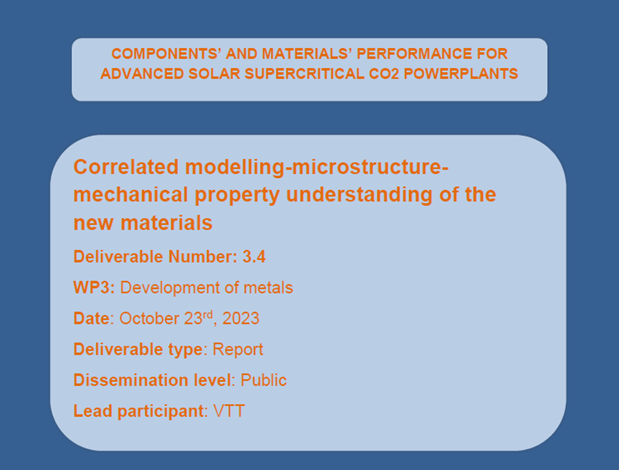
Deliverable 3.4 - Correlated modelling microstructure mechanical property understanding of the new materials
October 2023
WP4 – Evaluation and modeling of metal/medium interaction
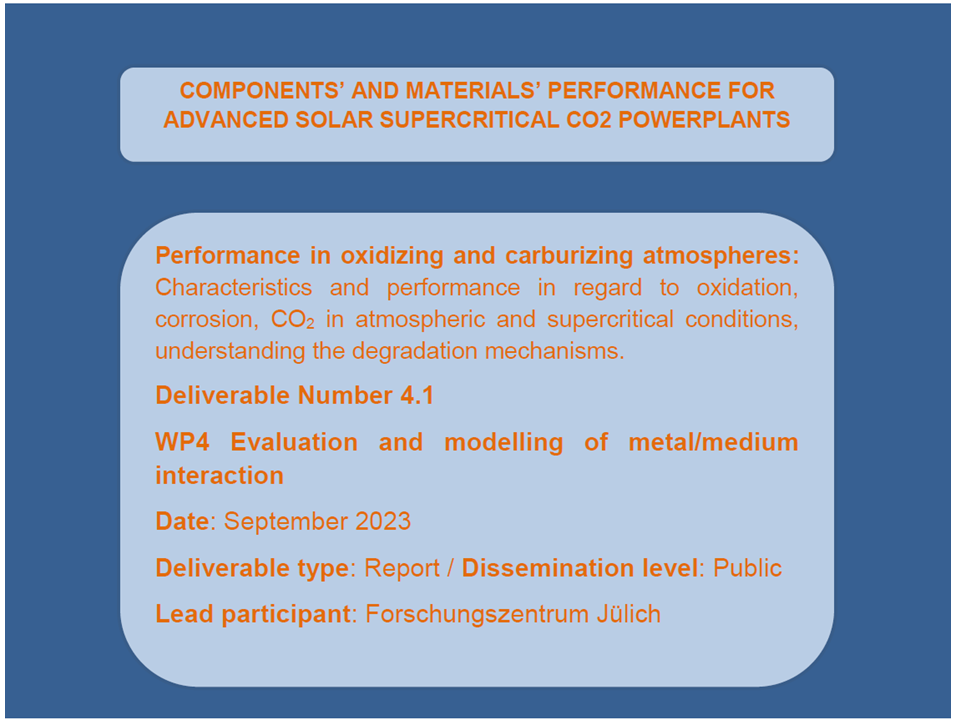
Deliverable 4.1 - Performance in oxidizing and carburizing atmospheres
The investigations of oxidation and corrosion resistance were carried out in a test programme shared between FZJ, CIEMAT and CVR. The specimens were tested in air or CO2 (technical or high-purity gas) at elevated temperatures (between 600°C and 900°C). The materials were characterised in thermogravimetry experiments (FZJ), quasi-isothermal oxidation (CIEMAT), and cyclic oxidation (FZJ), with future high pressure autoclave (CVR) tests planned. In order to evaluate the oxide scale growth kinetics and the microstructural changes in the materials induced by oxidation/corrosion, post-exposure characterisation was performed mainly by optical metallography and SEM/EDS analysis of cross-sections of the specimens. The deliverable D 4.1 provides a comprehensive overview of the oxidation and CO2-corrosion testing results.
September 2023
Deliverable 4.3 - Models of the degradation mechanisms
September 2024
Deliverable 4.2 - Wear and mechanical properties evaluation
April 2024
WP5 – Technology validation
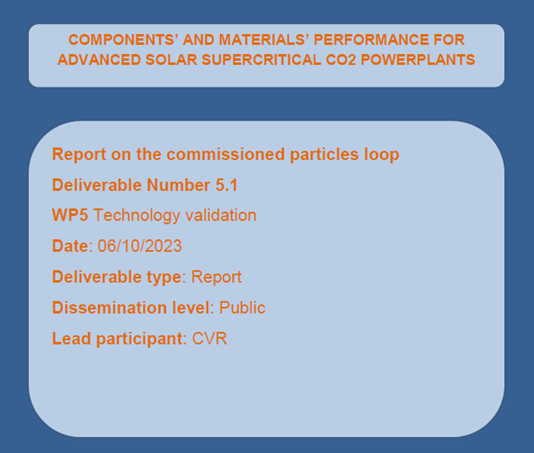
Deliverable 5.1 - Design summary of the commissioned particles loop
October 2023
Deliverable 5.4 - Evaluation of heat transfer and performance measurements of the HX (Task 5.4) to be used in the industrial design done in WP1
December 2023
Deliverable 5.3 - Design summary of the manufactured particles/ s-CO2 heat exchanger
December 2023
WP7 – Communication, dissemination and exploitation
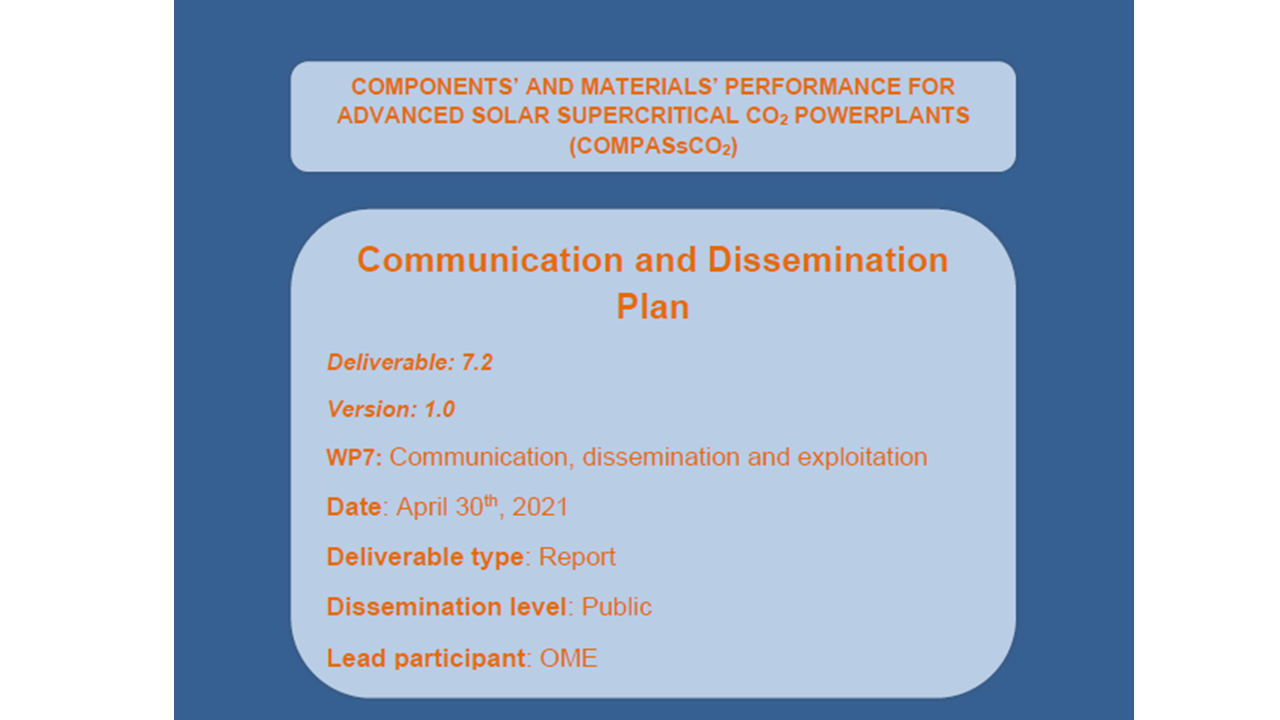
Deliverable 7.2 - Communication and Dissemination Plan
This deliverable outlines the communication and dissemination activities performed within the framework of the COMPASsCO2 project. Different aspects are covered, targeting both internal (between the project partner and the European Commission (EC)) and external communication with all project stakeholders, including EC obligations regarding H2020 communication activities.
April 30th, 2021
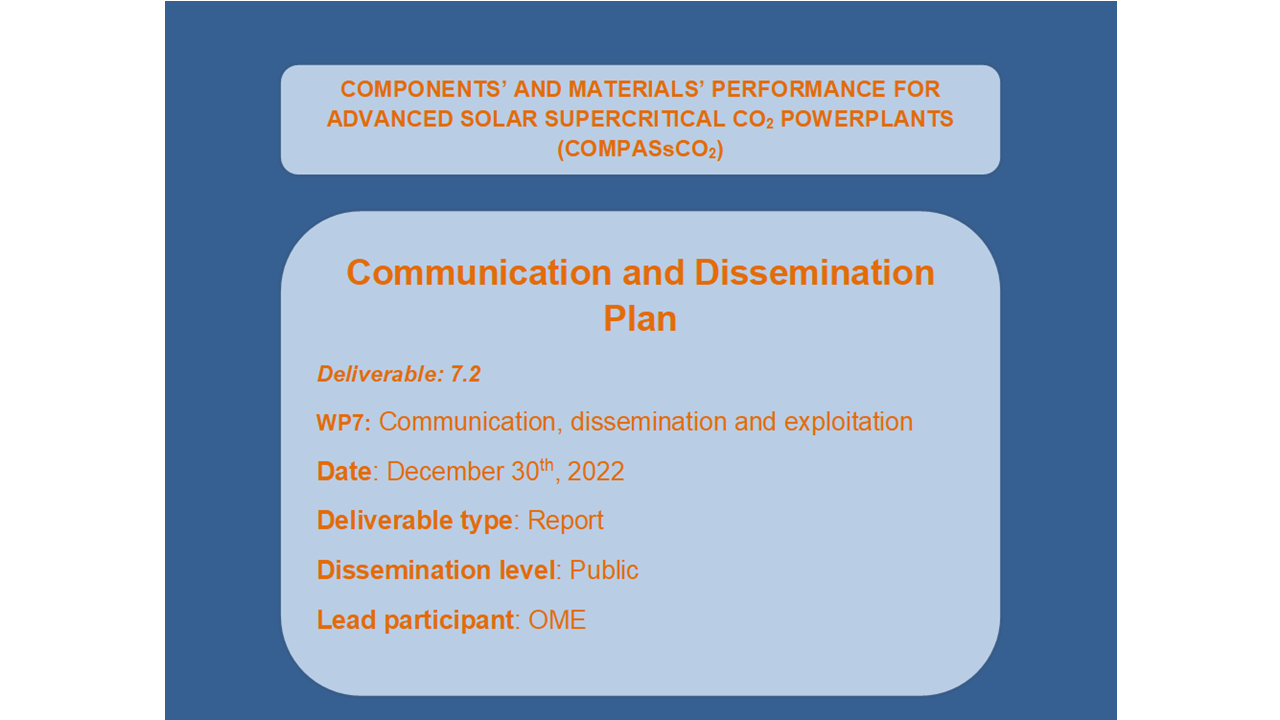
Deliverable 7.2 - Communication and Dissemination Plan
This deliverable outlines the communication and dissemination activities performed within the framework of the COMPASsCO2 project. Different aspects are covered, targeting both internal (between the project partner and the European Commission (EC)) and external communication with all project stakeholders, including EC obligations regarding H2020 communication activities. This is the second version of the plan that was initially developed in April 2021, following the first review of the project which was performed in spring 2022.
December 30th, 2022
